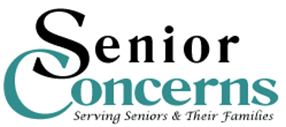The cost of medical and dental care is typically the largest expense for older Americans. Fortunately, some of these bills may be tax-deductible.
The 2016 tax year could be the last time adults age 65 and older can take advantage of a lower threshold for deducting a portion of your medical and dental expenses.
If you itemize your deductions on Schedule A of your tax return, among the categories to list are medical and dental expenses. However, they are subject to a limit.
For many years, the limit was 7.5 percent of a taxpayer’s adjusted gross income, meaning that only those medical expenses in excess of 7.5 percent of a taxpayer’s AGI were deductible. For example, if someone’s AGI was $40,000, only those medical and dental expenses that exceeded $3,000 (7.5 percent times $40,000 equal $3,000) would be deductible.
But the rules for deducting medical and dental expenses changed in 2013, increasing that threshold to 10 percent of AGI.
Seniors got a brief reprieve as Congress exempted people age 65 and older from the 10 percent threshold until 2017. What that means is seniors have one last chance this year to take advantage of the old rule, and take advantage of it they should.
Medical and dental expenses may include health insurance premiums (including Medicare premiums), long-term care insurance premiums, prescription drugs, nursing home care, medical equipment like wheelchairs, medical supplies, dentures, pharmacy co-pays, ambulance co-pays, hearing aids, mileage to and from doctor visits and many other out of pocket healthcare expenses.
You may also be able to deduct the costs of paid care in the home that is not covered or only partially covered by medical insurance. These expenses are deductible if the services are required by a chronically ill individual and a licensed healthcare practitioner prescribes the care.
An individual is chronically ill if unable to perform at least two of six activities of daily living (eating, toileting, transferring, bathing, dressing and continence). An individual who is cognitively impaired and requires substantial supervision is also generally considered chronically ill.
Physicians don’t think about tax deductions when they care for their patients. It’s OK to tell them about this opportunity and about the need for an appropriate letter or written plan.
Another deductible medical expense may be the amount you pay for special equipment installed in your home or for improvements made mainly for medical care. Constructing entrance or exit ramps, widening doorways, and installing railings, support bars or other modifications to bathrooms are some of the changes that qualify.
For a full list of allowable medical expenses, see IRS Publication 502 at www.irs.gov.
Do not send these records with your return. Keep them as documentation in the event you are audited.
It is advisable to consult with your tax professional for expert advice. If you do not have a tax professional, AARP Tax-Aide, in conjunction with the IRS, will provide free income tax preparation assistance and e-filing for seniors and low- to moderate-income adults of any age from Feb. 1 through April 15.
Free tax assistance is available to seniors by calling the following numbers for an appointment:
Simi (805) 583-6363
Moorpark (805) 517-6261
Thousand Oaks (805) 381-2744
Newbury Park (805) 498-2139
Agoura Hills (818) 597-7361
Today’s senior is well-advised to take advantage of tax incentives to ease the burden of medical care costs.




